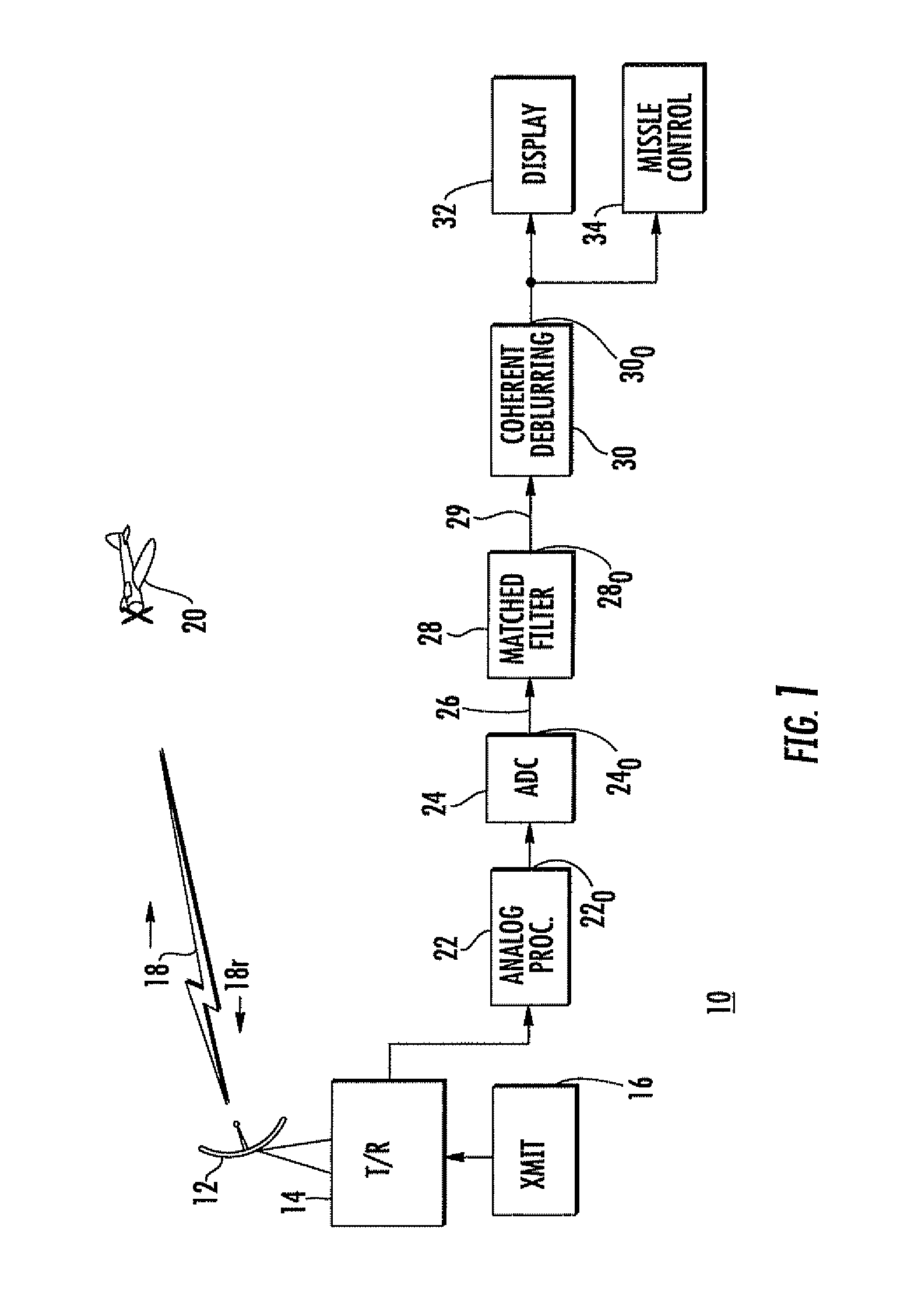Method for deblurring radar range-doppler images
a radar range and doppler technology, applied in the field of radar rangedoppler images, can solve the problems of large signal bandwidth, time resolution, and long signal duration, and achieve the effect of maximizing peak amplitud
- Summary
- Abstract
- Description
- Claims
- Application Information
AI Technical Summary
Benefits of technology
Problems solved by technology
Method used
Image
Examples
Embodiment Construction
[0029]FIG. 1 is a simplified block diagram of a radar system 10 according to an aspect of the invention. In FIG. 1, radar system 10 includes an antenna 12 and transmit-receive (T / R) device 14. T / R device 14 receives signals to be transmitted from a transmitter (XMIT) 16, and couples the signals to be transmitted to antenna 12, which transmits the signals in the form of electromagnetic radiation, illustrated by a “lightning bolt” symbol 18. The electromagnetic radiation propagates outward, and impinges on a target, if present. An airborne target 20 is illustrated. The transmitted electromagnetic energy impinges on target 20, and a portion of the signal incident on the target is reflected back toward the radar antenna 12, as suggested by arrow 18r. The reflected electromagnetic signal is transduced by antenna 12, and coupled through the T / R device 14 to analog signal processing, illustrated by block 22. The analog signal processing may include low-noise amplification, and down convers...
PUM
 Login to View More
Login to View More Abstract
Description
Claims
Application Information
 Login to View More
Login to View More - R&D
- Intellectual Property
- Life Sciences
- Materials
- Tech Scout
- Unparalleled Data Quality
- Higher Quality Content
- 60% Fewer Hallucinations
Browse by: Latest US Patents, China's latest patents, Technical Efficacy Thesaurus, Application Domain, Technology Topic, Popular Technical Reports.
© 2025 PatSnap. All rights reserved.Legal|Privacy policy|Modern Slavery Act Transparency Statement|Sitemap|About US| Contact US: help@patsnap.com



